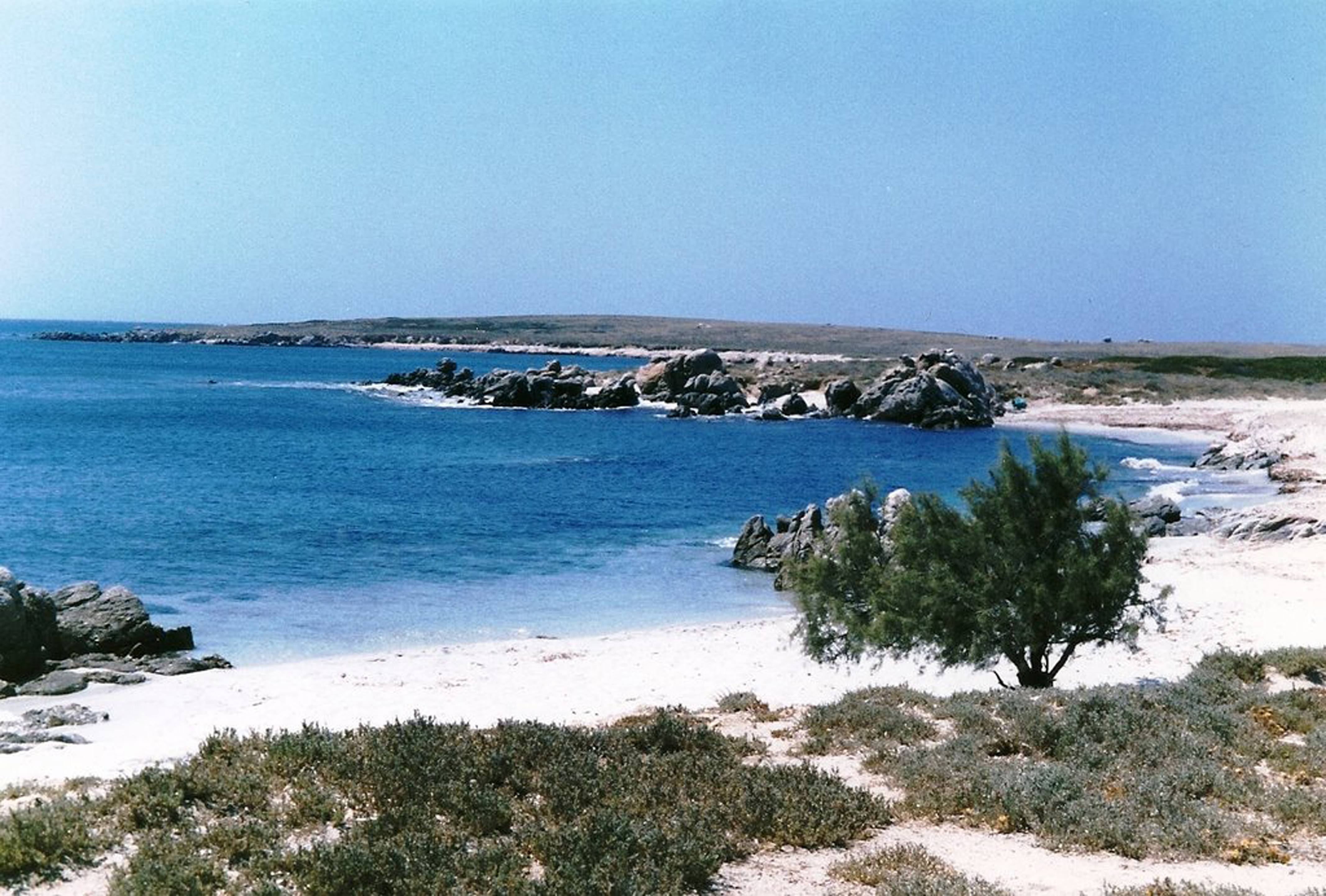
Area Marina Protetta Penisola del Sinis – Isola di “Mal di Ventre”
This post is also available in:
 Italiano (Italian)
Italiano (Italian)
This protected area along the west coast of Sardinia was established to safeguard the heterogeneous territory that stretches from the lagoon landscape of the Gulf of Oristano to the rocky coast of Capo San Marco, sloping down to San Giovanni di Sinis, in Mar Vivo and climbing up to Torr’e Seu. The actual area includes the small granite island of Mal di Ventre (whose name comes from “Malu Ventu”, clearly evoking the Mistral wind) and Scoglio del Catalano.
FLORA AND FAUNA
On the lower coastal strip, there are Cabras Pond, and Mitras and Sale Porcus lagoons, which are acknowledged as one of the largest wetlands in Italy. According to the depth and the amount of salt, the vegetation features different characteristics as you move away from the water. Thus, we can clearly identify the “Scirpeto”, the “Fragmiteto” or “Canneto”, often consisting only of marsh reed (Phragmites communis) spread along the banks where the water stagnates for a long time; then, there’s the “Limonieto”, with wavyleaf sea lavender that settles on sandy or clayey substrates and finally the “Giuncheto”, dominated by Juncus maritimus and a few other species such as soft rush, glasswort and alkaliweeds.
In this area, it is not difficult to spot birds, such as black-winged stilts, pied avocets, collared pratincoles, golden plovers, ruffs, slender-billed gulls, common terns, sandwich terns, common terns, little terns, black terns, little bitterns and red herons (Grey herons appear in autumn).
All the animals that take advantage of the thick vegetation to protect themselves from predators such as the marsh harriers.
The coast of this lowland features a sandy beach, largely colonized by Posidonia oceanica, which offer a most unique environment in the Mediterranean Sea for fan mussels, bivalve molluscs up to 4 ft-long.
The vegetation features the typical Mediterranean scrub: mastic trees (Pistacia lentiscus), rosemary, wild asparagus (Asparagus acutifolius) and cistus; in the coastal areas, there are some rare species, including Limonium tharrosianum, Poligala sinisica, and Viola Corsica “Nyman”.
Along the strip, towards the highest area, there’s a wide and extensive dune field (sand heaps) where plant species grow almost reaching the sea and the rocky coast, creating continuous movement effects. Not to mention limestone cliffs overlooking the sea, whose walls tend to continuously collapse, overturn and slide down, such as those of “Su Tingiosu”, “Capo Seu”, the promontory of “Capo S. Marco”, and the rock of Catalano.
The island of Mal di Ventre, on the other hand, has low grassy vegetation due to the strong Mistral wind, which frequently blows throughout the year.
Scuba divers appreciate several sites near Isola di Mal di Ventre and the Catalano rock, such as “Secca di Mezzo”: in those waters, there are amazing schools of barracudas and sea turtles, as well as the “Dutch wreck” or the “Vaporetto”, both shipwrecked on shallow waters.
This post is also available in:
 Italiano (Italian)
Italiano (Italian)
Contatti
Corso Italia, 108 - Cabras(OR)
0783 391097
info@areamarinasinis.it


